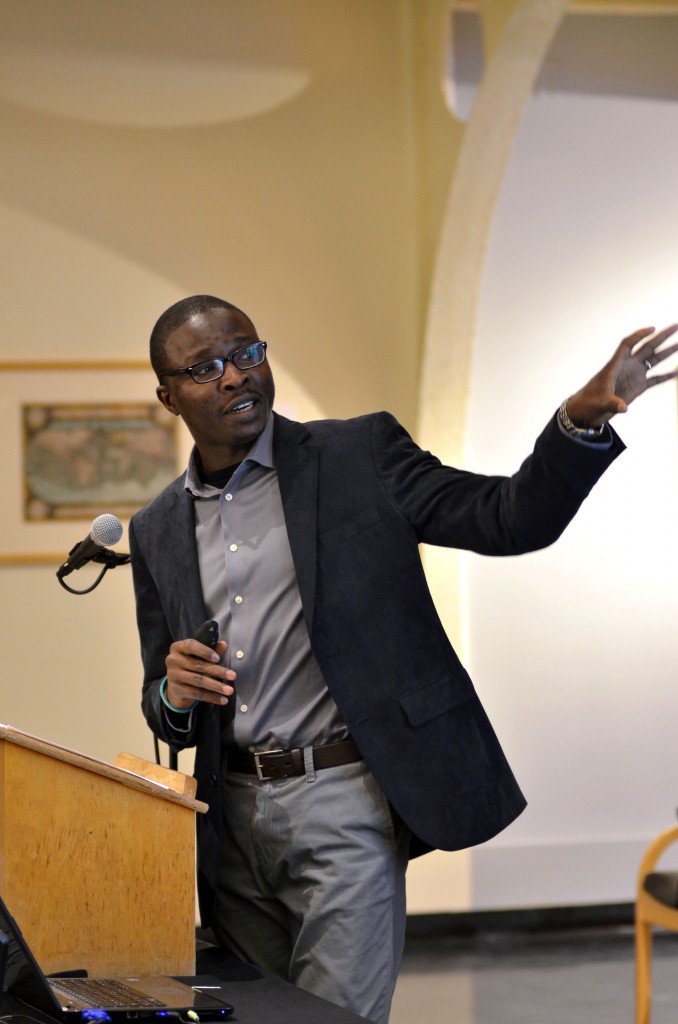
On Wednesday evening, Ugochukwu-Smooth C. Nzewi, the curator of African Art at the Hood Museum of Art at Dartmouth College spoke about Dak’Art, a biennial festival of contemporary African art that showcases traditional and modern facets of African artistry, conveyed through a variety of media, such as oil canvas and masks.
Dak’Art is named after Dakar, Senegal, where the festival is held. According to Nzewi, it has served as an important platform for contemporary visual culture in Africa.
As Nzewi showed pieces from different decades, there was a noticeable change from the pre- to post-colonial pieces. The art from the 1980s and 1990s contained messages about the political, economic and social failures that many African countries were facing at the time.
“Art was no longer ideological,” Nzewi said. “Art was about dealing with issues.”
Nzewi showed many forms of art, including paintings and masks. One piece, by a Cameroonian artist, bridged real photography with drawing, where two faces were side by side, looking at each other, one real and one not.
After gaining independence, African artists wanted to reclaim their heritage, so post-colonial pieces have more traditional aesthetic. Dak’Art highlights where traditional African art meets contemporary art forms. Nzewi used Dak’Art as a frame to study the progression of African art from the liberation of African nations in the 1950s to present day.
“It was a sweet exhibition, and I learned a lot not only about African art but Africa’s history as well,” said Pat Tierney, a junior majoring in economics. “I had no idea that African colonization lasted so long.”
Pamela Smart, an associate professor of art history and one of the organizers of the lecture, appreciated the perspective that Nzewi was able to provide on African contemporary art.
“It’s an opportunity for us to hear from a curator. I think that for many art historians it is incredibly useful to think about the curatorial process,” Smart said. “He’s also a practicing artist; he’s speaking to a number of constituencies.”
John Tagg, an art history professor, found the lecture to be an informative experience.
“It really showed you an insight that you don’t normally get exposed to, and I found that these types of events help broaden horizons for faculty and students,” Tagg said. “I’m glad that the University holds great events and there are many more upcoming ones, even this semester.”
The lecture was part of the Harpur College Dean’s Speaker Series in Visual Culture. It was sponsored by the art department, the Africana studies department and the University Art Museum.


